Clancy Tucker's Blog, page 225
April 17, 2016
18 April 2016 - ECUADOR
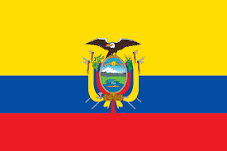
ECUADOR
G'day folks,
Ecuador is a country straddling the equator on South America’s west coast. Its diverse landscape encompasses Amazon jungle, Andean highlands and the wildlife-rich Galápagos Islands. In the Andean foothills at an elevation of 2,850m, Quito, the capital, is known for its largely intact Spanish colonial center, with decorated 16th- and 17th-century palaces and churches including the ornate Compañía de Jesús cathedral.

Geography
Ecuador, about equal in area to Nevada, is in the northwest part of South America fronting on the Pacific. To the north is Colombia and to the east and south is Peru. Two high and parallel ranges of the Andes, traversing the country from north to south, are topped by tall volcanic peaks. The highest is Chimborazo at 20,577 ft (6,272 m). The Galápagos Islands (or Colón Archipelago: 3,029 sq mi; 7,845 sq km), in the Pacific Ocean about 600 mi (966 km) west of the South American mainland, became part of Ecuador in 1832.

Government
Republic.

History
The tribes in the northern highlands of Ecuador formed the Kingdom of Quito around 1000. It was absorbed, by conquest and marriage, into the Inca Empire. Spanish conquistador Francisco Pizarro conquered the land in 1532, and throughout the 17th century a Spanish colony thrived by exploitation of the Indians. The first revolt against Spain occurred in 1809. In 1819, Ecuador joined Venezuela, Colombia, and Panama in a confederacy known as Greater Colombia.
When Greater Colombia collapsed in 1830, Ecuador became independent. Revolts and dictatorships followed; it had 48 presidents during the first 131 years of the republic.
Conservatives ruled until the revolution of 1895 ushered in nearly a half century of Radical Liberal rule, during which the church was disestablished and freedom of worship, speech, and press was introduced.
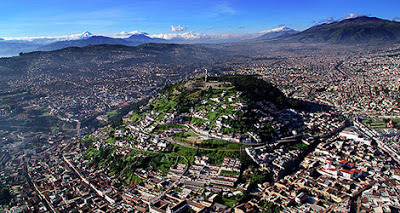
Although it was under military rule in the 1970s, the country did not experience the violence and repression characteristic of other Latin American military regimes. Its last 30 years of democracy, however, have been largely ineffectual because of a weak executive branch and a strong, fractious Congress.

Peru invaded Ecuador in 1941 and seized a large tract of Ecuadoran territory in the disputed Amazon region. In 1981 and 1995 war broke out again. In May 1999, Ecuador and Peru signed a treaty ending the nearly 60-year border dispute.

Clancy's comment: Wonderful place with beautiful people. Not sure what animal that is on that plate, but I'll pass.
I'm ...


Published on April 17, 2016 16:06
April 16, 2016
17 April 2016 - THE SPANISH ARMADA
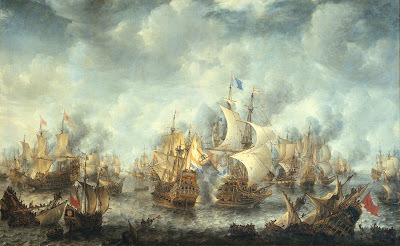
THE SPANISH ARMADA
G'day folks,
In May 1588, King Philip II dispatched the 130-ship Spanish Armada on a mission to guide an invasion force to the coast of England and topple the regime of Queen Elizabeth I. This “Great and Most Fortunate Navy” was one of the mightiest fleets ever assembled, but a combination of poor tactics, robust English resistance and dismal weather ultimately doomed it to failure. By the time Philip’s “Invincible Armada” finally limped back to Spain later that autumn, at least a third of its ships were lost and some 15,000 sailors had been killed. Below, explore eight surprising facts about one of the most ambitious—and disastrous—campaigns in military history.
Before attacking Elizabeth I, Philip II tried to marry her.
The Armada was the culmination of years of hostility between King Philip II of Spain and Elizabeth I, but the two weren’t always sworn enemies. Philip had once been married to Elizabeth’s half-sister, Mary I, and he later threw his support behind Elizabeth’s ascension to the throne. Shortly after Mary’s death in 1558, he even sent an ambassador to Elizabeth with a proposal of marriage, only to be humiliated when she declined. Relations between Spain and England deteriorated in the decades that followed. Much of the friction centered on religion. Philip was a devout Roman Catholic, and he considered Elizabeth a Protestant heretic. The Spanish were also enraged by English pirate raids on their treasure fleets, but the breaking point came in 1585, when Elizabeth pledged military support to Protestant rebels in the Spanish Netherlands. Convinced the agreement was an act of war, Philip began planning an “Enterprise of England” to remove her from the throne.
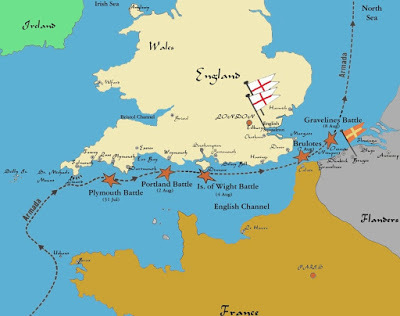
The English raided the Armada before it left Spain.
The preparations for the Spanish Armada were one of the worst kept secrets in Europe. Elizabeth’s spies easily gleaned intelligence about the fleet being assembled in Spain, and by the spring of 1587, the English were convinced that an invasion was imminent. To slow the Armada’s progress, the Queen allowed the salty privateer and navigator Sir Francis Drake to make a surprise strike against the Spanish port of Cadiz. After briefly capturing the city’s harbor, Drake and his men torched some 30 Spanish vessels and seized or destroyed several tons of food and supplies intended for the Armada. The Spanish managed to replace most of their losses, but Drake’s “singeing of the king of Spain’s beard” may have delayed the Armada’s launch by as much as a year, allowing the English crucial time to ready themselves for an invasion.
The Armada was not the main Spanish invasion force.
The Armada was one of the largest fleets ever assembled for a single mission, but it was not intended to attack England on its own. The Spanish plan instead called for the Armada, sailing under the command of the Duke of Medina Sidonia, to travel to the Flemish coast and rendezvous with a 30,000-strong land army under the Duke of Parma. It would then act as a defensive escort and supply convoy as Parma’s troops crossed the English Channel on small barges and moved on London. With this auxiliary role in mind, only around 35 or 40 of the Armada’s vessels were purpose-built warships. The rest were mostly armed merchantmen and cargo ships crammed with food and military supplies to support the land invasion.
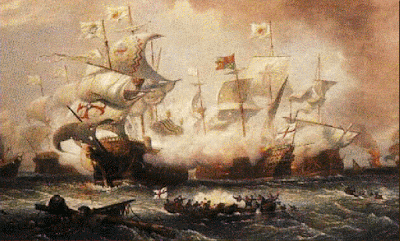
A system of coastal beacons helped warn the English of the Armada’s approach.
Along with fortifying their southern beaches and marshaling militiamen, the English prepared for the Armada’s arrival by overhauling a centuries-old system of signal beacons. This primitive early warning system consisted of around 1,000 outposts spaced several miles apart along the coastline. Each was manned around the clock by teams of watchmen and equipped with a raised iron basket filled with tar and pitch. When the Spanish fleet was finally sighted off Cornwall on July 30, the spotters lit their signal fires in succession and quickly spread a call to arms around the country. That same night, a 100-ship fleet under Lord High Admiral Charles Howard and Sir Francis Drake gathered outside Plymouth harbor and gave chase to the Armada.
The English used fireships to break the Armada’s formation.
The English fleet harassed the Armada for several days during its charge toward the English Channel, but their ships struggled to penetrate its crescent-shaped defensive formation. The situation grew more urgent on August 6, when Medina Sidonia dropped anchor near Calais, France to rendezvous with the Duke of Parma, who was desperately trying to gather his army in nearby Dunkirk. Knowing they couldn’t allow the Spanish to unite their forces, Drake and Lord Howard devised a scheme to scatter the enemy ships.
On the night of August 8, they packed eight empty vessels with timber and pitch, set them ablaze and sent them drifting into the center of the Armada’s formation. Upon sighting the fireships, the Spanish captains fled to the open sea in panic. Most even cut their ships’ anchors in their race to avoid the floating bonfires. While the Armada escaped from Calais without serious damage, the fireship strike succeeded in breaking its defensive line. The next morning, the English engaged the now disorganized Spanish fleet at the Battle of Gravelines, where Howard and Drake used their superior long-range cannons to score a decisive victory.
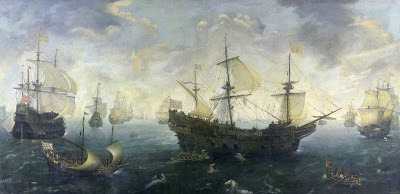
Sea storms were the main cause of the Armada’s defeat.
While the English prevailed at Gravelines, they only succeeded in destroying or capturing a handful of the Armada’s ships. The true knockout blow would come courtesy of Mother Nature. In mid-August, the battered Spanish fleet was pushed into the North Sea by strong winds, ending its hopes of rendezvousing with Parma’s army. Running low on food and water, Medina Sidonia resolved to return home by rounding the tip of Scotland and sailing south along the western coast of Ireland. The voyage was accompanied by unseasonably violent storms and gales, and dozens of the Armada’s ships eventually sank at sea or were dashed against the Irish coastline, killing some 6,000 sailors. Estimates vary, but most historians believe that only around 75 or 80 of the original 130 ships managed to return to Spain. Upon learning of the state of his once glorious Armada, Philip II supposedly exclaimed, “I sent my fleet against men, not against the wind and the waves.”
England launched a counter Armada the following year—with equally disastrous results.
Almost as soon as the humiliated Armada vanished over the horizon, Elizabeth began planning a counterattack to destroy the last of Philip II’s navy and bring the Spanish Empire to its knees. By April 1859, she had outfitted Sir Francis Drake and Sir John Norris with over 120 ships and dispatched them on a mission to invade Spain. It was a bold plan, but unfortunately for Elizabeth, her “English Armada” fared no better than the Spanish one. Rather than attacking the shipyards at Santander—where the remnants of the Spanish Armada were licking their wounds—Drake and Norris spent several weeks searching for plunder and unsuccessfully besieging the cities of Corunna and Lisbon. Their forces were soon riddled with disease, and Drake’s ship nearly sank after being ravaged by storms during an abortive attempt to raid the Azores. The English fleet later limped home in disgrace in the summer of 1589, having lost a staggering 11,000 men while achieving none of its military goals.

The Armada’s defeat didn’t permanently cripple the Spanish navy.
Contrary to popular belief, the defeat of the Spanish Armada wasn’t the end of Spain’s reign as a world naval power. Phillip II successfully rebuilt his fleet after the 1588 debacle and continued operations against England for several more years. He even launched two more armadas in 1596 and 1597, both of which were scattered by storms. It was not until 1604 that Elizabeth and Philip’s successors finally signed a treaty ending the 19-year Anglo-Spanish War as a stalemate. Spain’s navy continued to dominate the sea-lanes, however, and didn’t go into decline until the mid-17th century during the Thirty Years’ War.

Clancy's comment: What can I say? All wars are disastrous.
I'm ...

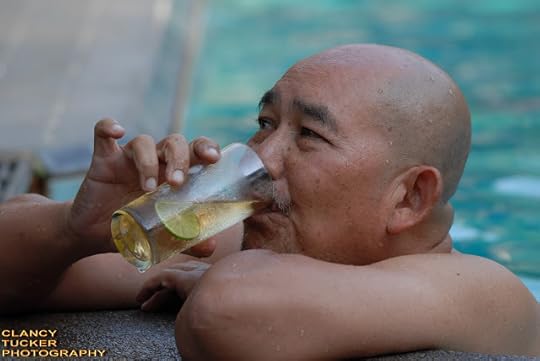
Published on April 16, 2016 15:13
April 15, 2016
16 April 2016 - CLANCY TUCKER PHOTOGRAPHY - FOOD

CLANCY TUCKERPHOTOGRAPHY- FOOD -
G'day folks,
Welcome to part-two of a series of photographs I took recently whilst overseas. This post is about food.


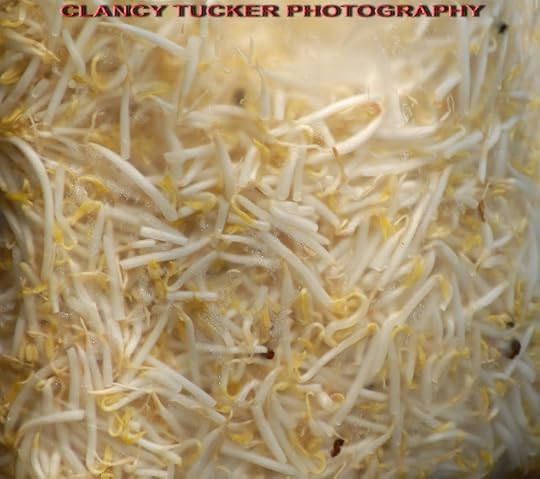



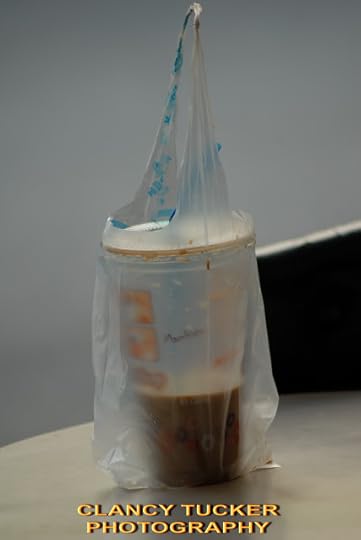





















Clancy's comment: Great food. Some of the people who sell this food work extraordinary hours, and many folks in Western countries could learn a big lesson from them.
I'm ...


Published on April 15, 2016 15:55
April 14, 2016
15 April 2016 - PEARL HARBOUR HEROES
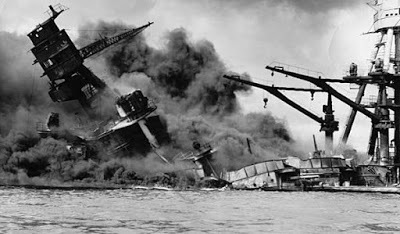
PEARL HARBOUR HEROES
G'day folks,
Shortly before 8 a.m. on December 7, 1941, the skies over the naval base at Pearl Harbor, Hawaii filled with the drone of more than 350 Japanese fighter planes and bombers.
During a two-hour ambush, the Japanese strike force rained fire on the unprepared Pacific Fleet, damaging or destroying some 20 ships and 200 aircraft and inflicting 3,500 casualties. The attack thrust the United States into World War II, but it is also remembered for the many scenes of heroism and self-sacrifice that played out as sailors and airmen mounted a desperate defense. From the man who led the evacuation of USS Arizona to the fighter pilot who took to the skies in his pajamas, learn the stories of the many servicemen who distinguished themselves on one of the darkest days in American military history.
Samuel Fuqua
Missouri-born Samuel Fuqua had a front row seat to the devastation at Peal Harbor from aboard USS Arizona, a battleship that was heavily bombed during the first wave of the attack. The 42-year-old lieutenant commander was having breakfast when the ship’s air raid sirens first sounded around 7:55 a.m. He immediately rushed to the quarterdeck, only to be strafed by enemy fire and then knocked out cold when a bomb fell just feet away from him. Though dazed, Fuqua jumped to his feet after regaining consciousness and began directing firefighting operations. Moments later, he became the Arizona’s senior surviving officer after another bomb detonated the ship’s ammunition magazine, killing more than 1,000 men.
As burned and maimed sailors poured onto the deck, Fuqua ignored gunfire from passing aircraft and calmly led efforts to evacuate his sinking ship. “I can still see him standing there,” Arizona crewman Edward Wentzlaff later remembered, “ankle deep in water, stub of a cigar in his mouth, cool and efficient, oblivious to the danger about him.” Fuqua was among the last men to abandon ship. He and two fellow officers then commandeered a boat and braved heavy fire while picking up survivors from the fire-streaked waters. He went on to win the Medal of Honor for his actions at Pearl Harbor, and was later promoted to rear admiral upon his retirement from the Navy in 1953.

Peter Tomich
Around the same time Arizona was being bombed, the training and target ship USS Utah was rocked by two torpedo strikes from Japanese aircraft. The aging vessel soon began to list to one side as water flooded into its hull. Inside the boiler room, Chief Watertender Peter Tomich ordered his crew to abandon ship. After ensuring that his men had escaped their engineering spaces, the Austro-Hungarian immigrant and World War I veteran returned to his post and singlehandedly secured the boilers, preventing a potential explosion that would have claimed many lives. USS Utah rolled over and sank just minutes later. Fifty eight men—Tomich among them—went down with the ship. The 48-year-old was posthumously awarded the Medal of Honor for his lifesaving actions, but in an unusual twist, the Navy was unable to locate any of his family members. His award went unclaimed for nearly 65 years until 2006, when it was finally presented to a relative during a ceremony in Split, Croatia.
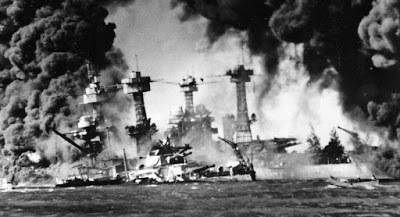
George Welch and Kenneth Taylor
Army Air Corps pilots George Welch and Kenneth Taylor spent the evening before the Pearl Harbor attack attending a formal dance and playing poker until the wee hours of the morning. They were still sleeping off their night of partying when they were awakened around 8 a.m. by the sound of exploding bombs and machine gun fire. Not wanting to miss out on a fight, the pair threw on their tuxedo pants and sped to Haleiwa airfield in Taylor’s Buick, dodging strafing Japanese planes along the way. Just minutes later, they became the first American pilots to get airborne after they took off in their P-40 fighters.
Welch and Taylor went on to wage a lonely battle against hundreds of enemy planes. They even landed at Wheeler airfield at one point and had their ammunition replenished before rejoining the fray. By the time the attack ended, the second lieutenants had shot down at least six fighters and bombers between them. Both were awarded the Distinguished Service Cross for their high flying exploits, and Taylor was given a Purple Heart for a shrapnel wound he received when his P-40 was struck by machine gun fire.

Doris Miller
Doris Miller’s skin color usually relegated him to the role of cook and laundry attendant aboard USS West Virginia, but when the ship was struck by multiple bombs and torpedoes on December 7, he became one of its most vital crewmembers. Miller had rushed to his battle station amidships as soon as the shooting started. Finding it destroyed, the amateur boxer sprinted to the quarterdeck and used his hulking frame to help move the injured. Miller was among the men who carried the ship’s mortally wounded skipper to safety, and he then helped pass ammunition to the crews of two .50 caliber machine guns.

Despite having no weapons training, he eventually manned one of the weapons himself and began blasting away at the Japanese fighters swarming around the ship. “It wasn’t hard,” he later remembered. “I just pulled the trigger and she worked fine…I think I got one of those Jap planes. They were diving pretty close to us.” Miller continued to operate the gun for some 15 minutes until ordered to abandon ship. His actions earned him the Navy Cross—the first ever presented to an African American—and he was widely hailed as a war hero in the black press. He later toured the country promoting war bonds before being reassigned to the escort carrier Liscome Bay. Sadly, Miller was among the 646 crewmen killed when the ship was torpedoed and sunk in 1943.

Clancy's comment: I guess there are always folks who will always stand up in bad situations.
I'm ...
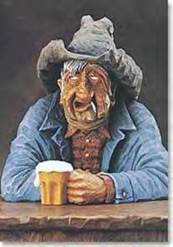
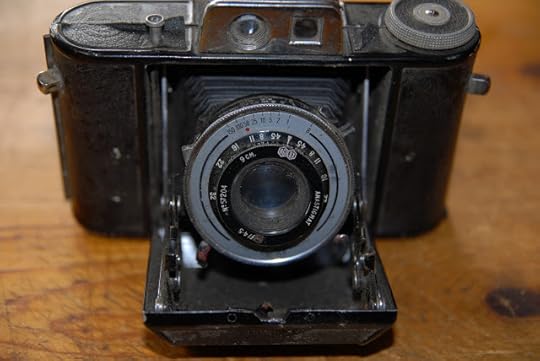
Published on April 14, 2016 14:38
April 13, 2016
14 April 2016 - DR. SEUSS GOES TO WAR

Dr. SEUSS GOES TO WAR
G'day folks,
Before Dr. Seuss wrote the “Cat in the Hat,” “Green Eggs & Ham” or most of his acclaimed children’s books, he used his illustrative talents and penchant for rhyming to pen political cartoons and produce propaganda films that supported the Allied cause in World War II. II.
As World War II continued to rage on January 7, 1943, Theodor Geisel reported for duty. Dressed in a size 40-long captain’s uniform, the U.S. Army’s newest volunteer boarded a train for California, leaving behind his New York apartment as well as his budding career writing and illustrating children’s books under his distinctive pseudonym—Dr. Seuss.

Three years earlier, Geisel had been at work on his fourth children’s book, “Horton Hatches the Egg,” when a news flash on the radio announced that Paris had fallen to the Nazis. Having dabbled in political cartoons during the 1930s, Geisel felt compelled to put his projects for young readers aside and brandish his pen to fire satirical shots at Adolf Hitler and American isolationists such as aviation pioneer Charles Lindbergh who wanted to keep the country out of the war in Europe. “While Paris was being occupied by the clanking tanks of the Nazis and I was listening on my radio, I found that I could no longer keep my mind on drawing pictures of Horton The Elephant. I found myself drawing pictures of Lindbergh The Ostrich,” he said.
In 1941 and 1942, Geisel drew over 400 editorial cartoons for the left-leaning tabloid newspaper PM. Although the cartoons sport his distinctive style and fanciful menagerie of creatures, the subject matter is quite foreign, in more ways than one, to Dr. Seuss readers. One cartoon depicts a “Lindbergh Quarter” with an ostrich sticking its head in the ground in place of an American eagle. Another showed Lindbergh patting the head of a swastika-covered sea serpent that sported Hitler’s trademark mustache.

When Geisel heard news of the bombing of Pearl Harbor, he put down his copy of the Sunday New York Times and went to his drawing board to sketch a Seussian bird labeled “ISOLATIONISM” being blasted high into the sky by an explosion. “He never knew what hit him,” read the caption. With the United States now at war with Japan, Geisel’s cartoons increasingly trafficked in racial stereotypes. He portrayed Japanese leaders as narrow-eyed, buck-toothed caricatures, and one xenophobic cartoon portrays Japanese-Americans on the West Coast waiting in a long line for blocks of dynamite as well as “the signal from home.”
The American government enlisted the illustrator in the war effort by having him draw cartoons that urged the conservation of resources and the purchase of savings bonds and stamps to raise money for the war effort. Wishing to do more to back the war that he had lobbied for, the 38-year-old Geisel joined the U.S. Army and was deployed to the Fox studios in Hollywood—dubbed “Fort Fox”—to serve with some of the country’s top filmmakers, screenwriters, animators and journalists in Oscar-winning director Frank Capra’s Signal Corps unit.
Geisel worked to enliven the typical training manuals with his imaginative characters, such as an anthropomorphized malaria-carrying mosquito named Ann who eschewed whiskey and gin for the blood of soldiers and the “squander bug” who feasted on money that could have been better spent on war bonds.

He also worked alongside famed Warner Bros. animation directors Chuck Jones and Friz Freleng in creating cartoon shorts featuring Private Snafu—a bald, bumbling GI with the looks of Elmer Fudd and the voice of Bugs Bunny (Mel Blanc supplied the voices of both characters). In nearly 30 episodes, the misadventures of the inept soldier both entertained and educated servicemen by demonstrating the pitfalls of doing things exactly as they shouldn’t be done—such as disobeying orders, evading censors and leaking classified information.
Geisel wrote rhyme-studded scripts and contributed to storyboards of the cartoon, which was considerably more risqué than even the looniest of Looney Tunes (although the acronym that inspired the character’s name was sanitized to “Situation normal all FOULED up”). Since “Private Snafu” was released to only a military audience, it was not subject to the censors upholding the Motion Picture Production Code and could feature mild profanity, occasional off-color jokes and double entendres such as the hazards of “booby traps” posed by buxom spies. One episode even depicted a mosquito named “Malaria Mike” taking aim at Private Snafu’s bare bottom as he bathed in a river.

After being promoted to major in March 1944, Geisel shifted his focus to live-action documentaries, such as “Your Job in Germany,” which explained to American soldiers what their mission would be after an eventual Nazi surrender. The propaganda film came with the ominous message that Germans could not be trusted: “The Nazi Party may be gone, but Nazi thinking, Nazi training and Nazi trickery remains. The German lust for conquest is not dead.” When Geisel traveled to Europe to show high-ranking generals the top-secret film, he suddenly found himself trapped for three days behind German lines at the onset of the Battle of the Bulge before he could be rescued. While General Dwight Eisenhower and others gave their approval to the documentary, the only poor review came from General George Patton, who panned it with a one-word profanity before walking out of the screening.
Another film for which Geisel wrote a script, “Know Your Enemy—Japan,” was released on the same day the atomic bomb fell on Nagasaki, and General Douglas MacArthur ordered it quickly withdrawn. Another 18-minute film that Geisel produced following Capra’s discharge, “Our Job in Japan,” met a similar fate as MacArthur prevented its release following its completion. All was not lost, however, as Geisel and his wife, Helen, used the film as the basis for their screenplay for the 1947 documentary “Design for Death,” which earned an Academy Award.

After a three-year stint in the military, Geisel finally returned to civilian life, having received the Legion of Merit award for “exceptionally meritorious service in planning and producing films, particularly those utilizing animated cartoons, for training, informing, and enhancing the morale of the troops.” And with the publication of “McElligot’s Pool” in 1947, Dr. Seuss finally returned from the war effort as well.

Clancy's comment: Did you know that?
I'm ...


Published on April 13, 2016 16:43
April 12, 2016
13 April 2016 - ANECDOTE FROM A TRAVELLER

ANECDOTE FROM A TRAVELLER
G’day folks,
Here is an anecdote from my recent trip away.
Whilst in southern Thailand, I ventured out one night to have my first western meal at Pizza Hut. So, I grabbed the public bus, called a songthaew (two lines), and headed down the beach road. The bus I boarded was packed, but I managed to grab a seat. As it trundled along, a girl opposite me began speaking to me in Thai. That was fine, but I did notice that a ladyboy was sitting beside me and one next to the woman speaking to me. We chatted in Thai until I arrived at Pizza Hut where I paid the driver the 10 Baht and entered the restaurant.

I enjoyed my meal and poked my hand into a pocket of my shorts to pay the bill. Alas! No money! I instantly knew that I’d been had – pick-pocketed by the ladyboy next to me, whilst his cohort blabbed to me in Thai to distract me.
I approached the manager and explained the situation in Thai. She frowned, wondering what to do. I took charge of the situation and offered my new watch as security. I then said I’d return to my hotel kilometres away to obtain more money from my security box. But, I had no money to pay for a motorcycle taxi driver. What did she do? She gave me 100 Baht of her own money and took my watch reluctantly.
I grabbed a taxi driver and headed back to the hotel, only to find that access to security boxes closed at 8pm! You would have heard me swearing back in Australia. What did I do? I told the taxi driver to come back the next day and I’d pay him 300 Baht. I then went to bed, feeling frustrated.

The following day I went to Pizz Hut, paid my bill of 400 Baht and gave the 100 Baht back to the manager. I then gave her another 100 Baht for her trust. That afternoon the taxi driver arrived at my hotel and I paid him 300 Baht. Both the taxi driver and the restaurant manager bowed to me respectfully.
This was the first time I’d ever been robbed in SE Asia. Why, because I wore shorts I’d never worn, and placed my money in the loose and open pockets. Normally, I keep my money in a top pocket of my shirt which has two gore-tex clips. Also, I always carry enough money that I’m prepared to lose.

I later learned that a similar scam is happening every day on the local busses, and I got caught. However, I did return to Pizza Hut for one more meal and I was treated like a king.
Is it any wonder I love being in Thailand?

Clancy's comment: Mm ... You may wonder why the manager and the taxi driver trusted me to pay the money owed to them. Maybe it was because I was well-dressed, and spoke Thai? Who knows? Whatever the reason, this experience is another reason to love and respect Thai people. I recently rang Pizza Hut in Bangkok to praise the young manager. They were delighted.
THANK YOU!
I’m …
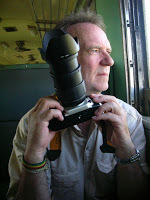

Published on April 12, 2016 16:08
April 11, 2016
12 April 2016 - GREAT WRITING QUOTES

GREAT WRITING QUOTES
G'day folks,
Here are a few quotes that might make you writers smile ... Or work a bit harder.











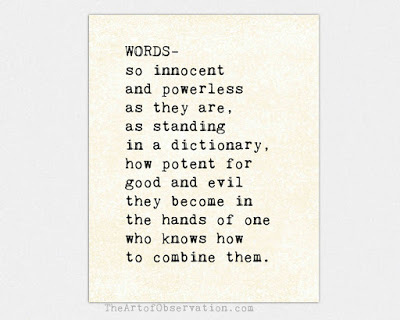





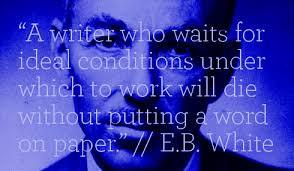

Clancy's comment: Hope some of these have inspired you to do something.

TOP REVIEW OF 'MISTER RAINBOW' by Anastasia Gonis - Buzzwords Books Magazine
http://www.buzzwordsmagazine.com/
Mister Rainbow by Clancy Tucker (Clancy Tucker Publishing)PB RRP $15.00 plus $3.00 postage ($6.00 for overseas post) E-book $3.00ISBN 9780646938943
Multi-talented Clancy Tucker’s second novella calls attention to environmental polluting, issues facing return soldiers specifically those of the Vietnam War, and the bonds of friendship. These three themes are strung cleverly together to form an adventure story with a fishing background. Clancy, a vigorous champion of disregarded causes, again presents points of importance through a strong narrative.
Dead fish have been found floating in the river and the EPA is collecting samples of the water. Toby and Maddie are fishing partners and this is cause for concern as they have just lost a friend to what the locals are calling Mill Flu.
Toby is smart and resourceful; curious and an adventurer. There are places that are out-of-bounds to the two children because they hold dangers. Toby is careful but is challenged by limitations. On one of their fishing trips they venture into a forbidden area with traumatic results.
Johan Bolt is an old loner. Few people know anything about him as he lives in an old shack close to the river with minimal material possessions. It is to him that Toby runs for help when Maddie falls into the river and Bolt saves her life. They keep this happening a secret, but Maddie becomes seriously ill as a repercussion of ingesting polluted water.
A string of events brings the three characters together after Toby finds Bolt unconscious behind the shack, and with quick thinking, saves the old man’s life. He discovers secrets about Bolt that have been kept for years and that leave him ‘gob smacked’. His ingenious mind is always turning up new and sensible ideas. This, combined with his discovery about Bolt, will change all their lives for the better.
A terrific read that skips along quickly. It will suit reluctant readers, mostly boys, and others from 8-80 as the chapters are compact and the story fast-paced, intense and full of action. All Clancy Tucker’s books can be purchased via his daily Blog. :http://clancytucker.blogspot.com.au/ or through Morris Publishing Australia http://www.morrispublishingaustralia.com/ All the photographs on covers and within the books are taken by Clancy Tucker.
Love ya work, Anastasia! Thank you, Buzzwords Magazine!
I'm ...
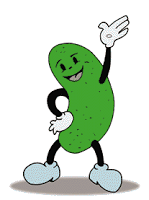
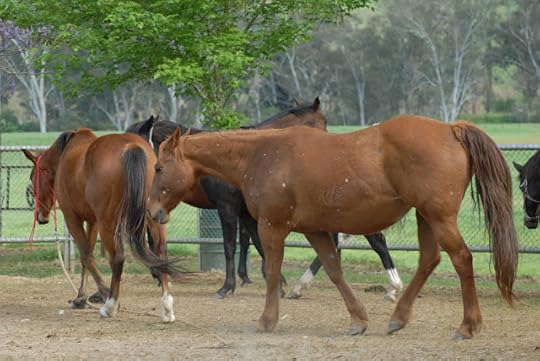
Published on April 11, 2016 15:50
April 10, 2016
11 April 2016 - ORIGINS OF THE WORD 'BLACKMAIL'

ORIGINS OF THE WORD 'BLACKMAIL'
G'day folks,
I guess you have always wanted to know this.
The definition of blackmail—the act of demanding that a person pay money or do something in order to avoid having damaging information about him or her exposed—has evolved over time. The word’s origins are linked to the chieftains in the border region between England and Scotland in the 16th century and part of the 17th century. During that period, the chieftains ordered landholders to pay them in order to avoid being pillaged. The “mail” in the word meant “tribute, rent” and was derived from an old Scandinavian word, “mal,” meaning “agreement.” The “black” in blackmail is thought to be a play on “white money,” the term for the silver coins with which tenant farmers traditionally paid their legitimate rent.

One of America’s earliest political sex scandals involved blackmail. In 1791, Alexander Hamilton, then America’s first treasury secretary as well as a married man, became romantically involved with Maria Reynolds, a young woman who claimed she needed money because her husband had abandoned her. When Reynold’s husband, James, reappeared on the scene, he forced Hamilton to pay him in order to keep quiet about the affair. After James Reynolds later got caught in a plot to defraud the federal government, he attempted to implicate Hamilton in the scheme. Confronted by James Monroe and several of his congressional colleagues, Hamilton denied any involvement in the scheme but admitted to his liaison with Maria Reynolds.

He gave the congressmen letters from both of the Reynolds that indicated his involvement with James had been about the affair not a financial scheme. Convinced that Hamilton wasn’t involved in government corruption, the congressmen agreed to drop the matter. However, partisan political writer James Callender subsequently got his hands on the letters and in 1797 published the story of Hamilton’s secret affair, while also charging that his payments to James Reynolds were part of a plot to swindle the government.

Hamilton, in turn, published a detailed response in which he admitted to marital infidelity but denied the financial corruption charges. The former treasury secretary, who’d left his post in 1795 to return to practicing law, survived the scandal (and even made it onto the face of the $10 bill) but died in 1804 after being mortally wounded by Aaron Burr in America’s most famous duel.
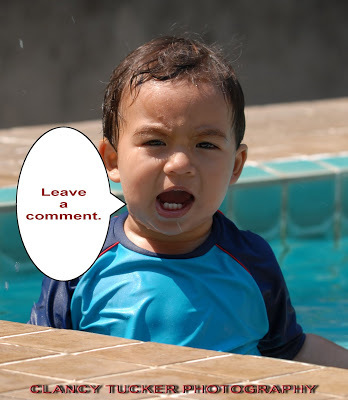
Clancy's comment: So, stay on the right side of me or else.
I'm ...


Published on April 10, 2016 15:58
April 9, 2016
10 April 2016 - THE BUGATTI BROTHERS
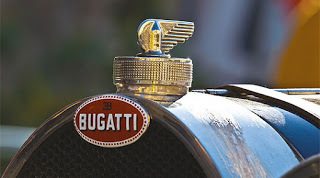
THE BUGATTI BROTHERS
G'day folks,
Most people know the name Bugatti, but here are some interesting facts behind the name. Sadly, in 1916 Rembrandt Bugatti, a sculptor and younger brother of Italian auto designer and manufacturer Ettore Bugatti, committed suicide at the age of 31.
The Bugatti brothers were born in Milan, Italy; Ettore in 1881 and Rembrandt in 1884. They came from a creative family that included artists and architects. Their father, Carlo Bugatti, was a successful furniture and jewelry designer. In 1909, Ettore founded the Bugatti car company in present-day Molsheim, France; the business became known for its stylish, high-performance automobiles. During the 1920s and 1930s, Bugatti made a name for itself in the racing world, taking first place at the inaugural French Grand Prix at Monaco in 1926 (and going on to win a number of later Grand Prix races) and claiming victory at the 24 Hours of Le Mans in 1937 and 1939.
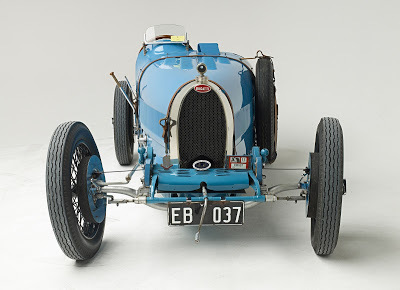
Ettore Bugatti’s son, Jean, was a talented car designer who worked with his father. He died in 1939 at the age of 30 while testing a Type 57 car. Ettore Bugatti died on August 21, 1947, and was buried in the Bugatti family plot in Dorlisheim, France, near his brother Rembrandt and his son Jean. The Bugatti company had experienced difficulties during World War II and after Ettore’s death, the business went into decline and was sold. In the late 1990s, Volkswagen purchased the Bugatti name and incorporated Bugatti Automobiles S.A.S., basing the new company once again in Molsheim. In 2004, the company began production of the Bugatti Veyron, a super sports car that carried a price tag of over $1 million and was capable of reaching speeds of around 250 miles per hour, making it one of the world’s fastest production cars.
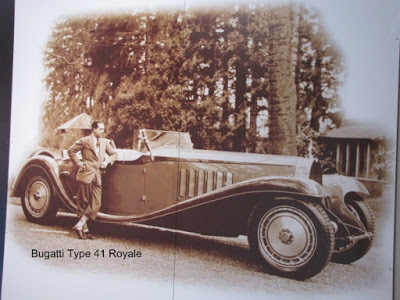
In February 2009, a rare unrestored 1937 Bugatti Type 57S Atalante Coupe that was found in the garage of a British doctor sold at a Paris auction for some $4.4 million. The black two-seater, one of just 17 57S Atalante Coupes ever made by Bugatti, had been owned by English orthopedic surgeon Harold Carr since 1955. The vehicle was built in May 1937 and originally owned by Francis Richard Henry Penn Curzon, the 5th Earl Howe and the first president of the British Racing Drivers’ Club and a winner of the 24 Hour Le Mans race. At the time of the auction, the car was said to be in good condition and had 26,284 miles on its odometer. When it was built, the 57S Atalante Coupe was capable of reaching speeds of more than 120 miles per hour at a time when the average car couldn’t do more than 50 miles per hour.

Like Bugatti automobiles, Rembrandt Bugatti’s sculptures are sought out today among art collectors. He was best known for his sculptures of animals; a replica of a dancing elephant he designed was featured as a hood ornament on a 1920s Bugatti Royale auto. At the time of his suicide in 1916, Rembrandt Bugatti was reportedly experiencing financial troubles and suffering from a depression spurred on by the events he’d witnessed as a volunteer paramedic aide during World War I.

Clancy's comment: Mm ... I've been fortunate enough to have been in and driven a few Bugatti's, only because friends of mine owned them. However, there always seems to be an element of sadness behind success.
I'm ...


Published on April 09, 2016 16:32
April 8, 2016
9 April 2016 - MARIA von TRAPP
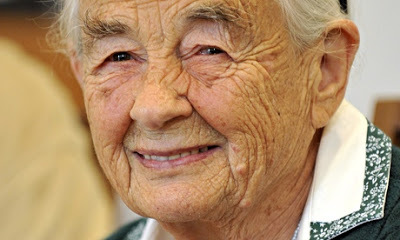
MARIA von TRAPP
G'day folks,
I guess you have all seen 'The Sound of Music" - musical or film.
Maria von Trapp was best known for performing with the Trapp Family Singers in the 1930s and '40s. Her memoir was the basis for the ‘The Sound of Music’ musical and film.
Synopsis
Born in Austria in 1905, Maria von Trapp studied to become a nun before her marriage to Baron Georg von Trapp in 1927. The family, which grew to include 10 children, began performing as the Trapp Family Choir in the mid-1930s, and then the Trapp Family Singers after moving to the United States later in the decade. In 1949, the Baroness wrote the memoir The Story of the Trapp Family Singers, which became the inspiration for the 1959 musical The Sound of Music and the 1965 film of the same name. She spent most of her later life in Vermont, and died in the village of Morrisville in 1987.
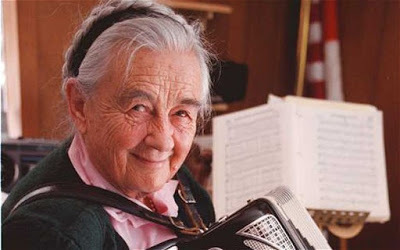
Early Life
Born Maria Augusta Kutschera on January 26, 1905, Maria von Trapp wrote the 1949 book The Story of the Trapp Family Singers. This book later became the basis for the Broadway musical and feature film The Sound of Music. But there is much more to von Trapp's life than these productions showed. Her childhood was marked by hardship. She was born on a train headed to Vienna, Austria, and was orphaned at a young age. According to reports, von Trapp was put in the care of an abusive uncle who had staunchly socialist and anti-Catholic views.
Von Trapp studied at the State Teachers College for Progressive Education in Vienna. While a student there, she discovered religion and converted to Catholicism. Von Trapp later she decided to devote her life to her faith, becoming a candidate for the novitiate at Nonnberg Abbey in Salzburg.
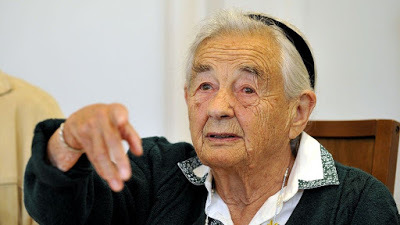
Marriage and Musical Beginnings
In 1926, she was sent from the convent to act as a tutor for one of Baron Georg von Trapp's seven children from his first marriage. The girl, also named Maria, was sick and unable to attend regular school. Maria von Trapp was only meant to stay for less than a year and then return to the convent to become a nun. But she became attached to the children and decided to leave the Church after the Baron proposed (he was 25 years her senior). The pair wed in 1927 and later had three children together.

The von Trapp family had always been musical, even before Maria joined them. However, the Baroness saw their talents as a way to help them out of a financial crisis, as much of their money was lost in the economic upheaval of the 1930s. The family began performing together with the help of a Catholic priest named Franz Wasner, who served as musical director. They won a singing competition in 1936, and went on a European tour the following year as the Trapp Family Choir.

Clancy's comment: Interesting life. Great movie. Top music.
I'm ...

Published on April 08, 2016 16:02



